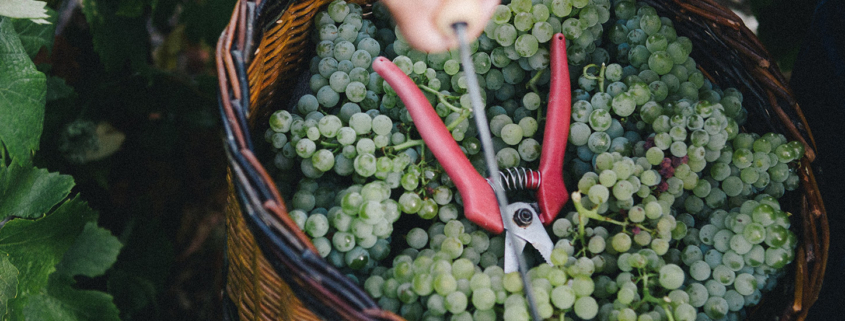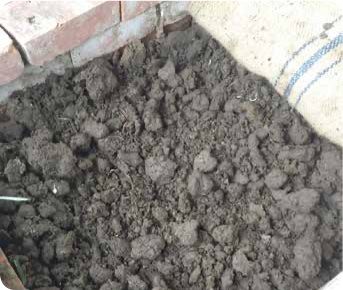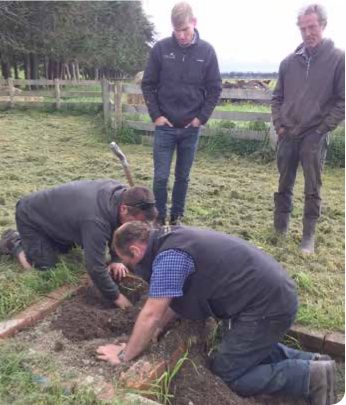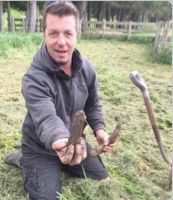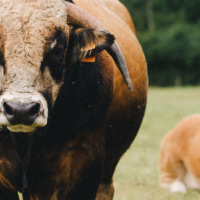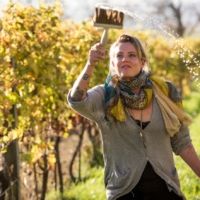If at first you don’t succeed…
Harvest Article – Summer 2016
Angus Thomson of Urlar Wines tells how he finally made the leap from organic to biodynamic growing.
My journey to organics had a seed sown about 20 years ago.
My wife and I were farming the family farm in Scotland. We had a friend who owned an organic brewery, and he asked if we would consider growing organic barley for him.
After two very wet summers, the thought of growing any crop organically soon went from our minds.
In 2004, we immigrated to New Zealand with an exciting new future ahead of us. We moved to Gladstone, a small community 10km from Masterton. We bought 45 hectares and planted it in grapes. Our goal was to grow premium quality grapes and then turn them into premium quality wine.
Shortly after arriving, in 2004, we planted the land in Pinot Noir, Sauvignon Blanc, Riesling and Pinot Gris. For the first two years while we were finding our feet, we farmed the land chemically. Mostly, this meant using Roundup to combat the good old weeds.
In early 2007, we both decided that this was our moment to do something good for our children and good for our land.
In February 2007, we started the conversion to organic certification with BioGro. We also at this point started practicing biodynamics. We tried making 500, but it never really worked properly, despite reading book after book. The worms always used to get into the horns before we did! Out of frustration, our interest in biodynamics waned, until July 2015, when the vineyard was really only managed organically.
In July 2015, the interest came back in buckets, thanks to New Zealand’s inaugural Organic and Biodynamic Winegrowing Conference in Blenheim.
In May this year I became a student again – off to Taruna for our first week of learning all about biodynamics. I would like to thank Rachel Pomeroy and Taruna for agreeing to do a course slightly out of season specially for us grape guys and gals.
The first week of the course was a biodynamic dream of compost making, learning how to make all of the preps, and also making the preps with the legendary Chris Hull at Hohepa Farm in Poraiti. I came away from the week singing, and desperate to get home to put into practice all that we had learnt.
We got straight into making a 50m3 compost pile, planted 100 cow horns to make 500, and made two cowpat pits. As I write this we have just lifted our 500 today, and it looks just amazing. It is amazing what a clay plug can do to keep our friendly worms out. Also going and regularly checking the horns is important.
The biodynamic course at Taruna has been absolutely amazing. The tutors – Gui, Jen and Rachel along with many others – have been wonderful. Thank you for your knowledge.
Since embracing biodynamics properly we have seen a buy-in from us, obviously, but also from our staff. They are included in everything biodynamic, from the compost-making to the 500 to making 501. They love the learning and the whole philosophy of it. As far as our land is concerned, we are more in tune, and our observation skills are so much more dialled up than they used to be. We adore the inclusion of everyone in biodynamics; it is the one place in our operation where no one has a title. You are not the owner, winemaker, vineyard hand; you are all equal making 500.
As I write this, I am excited. As I said, we have just lifted our own 500, and next week in the descending period on a root day we will be applying our 500 for the first time. So cool.
I passionately believe that whether you grow barley, wheat, chickens, beef or wine, we as farmers have a responsibility to supply food that is safe and nutritious for the customer to eat. This is our little way of doing it.
For those of you out there like us, who tried BD and couldn’t make it work despite reading every book, I can recommend Taruna College. There the book gets put into practice by people who are passionate and know what they are doing. I now have the BD bug, and I hope you will catch it too if you haven’t already. It’s a truly great way of farming.

